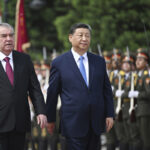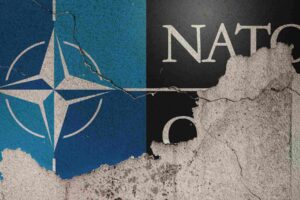Multiple reports from overseas news agencies, including Reuters and Bloomberg, suggest Australia will acquire the next generation of British nuclear-powered hunter-killer submarines sometime in the 2030s, with US-made Virginia Class boats filling a local capability gap in the interim.
Leaders from all three nations are expected to make the formal announcement on Tuesday in the US.
With Defence and the Prime Minister’s Office batting away well-informed speculation and leaks from AUKUS allies, the push to acquire more submarines more quickly will finally cement into place Australia’s entry into the nuclear power club.
If the reports — which are consistent — are correct, they confirm AUKUS’ so-called ‘optimal path’ will first be three-to-five more readily available US off-the-shelf Virginia Class subs followed by what may well be a platform deliberately designed to be interoperable across all three military forces.
The main advantage nuclear submarines offer over conventional diesel-electric boats is speed and endurance, namely that nuclear boats can stay under for literally months.

Loose lips sell ships
It appears the submarine leaks may have started in the UK, with prime minister Rishi Sunak reportedly telling ministers a deal for a British boat would be announced.
With that information circulating through triumphant reports in both The Times and The Guardian, further overseas reports swiftly emerged that Australia would first be using US Virginia Class subs until the new unnamed British boats fitted with US kit (electronics, communications and weapons platforms) came on-stream.
The leaking of the announcement is somewhat of an anti-climax for prime minister Anthony Albanese, underlining the fact that Australia is the smallest power in AUKUS sandwiched between a former colonial parent whose empire used to rule the seas and a modern nuclear superpower whose technology now defines modern military doctrine.
Even so, the potent geopolitical photo opportunity that will be on show on Tuesday (Australian time) will be of a united Anglosphere spanning three continents working towards common, interoperable platforms that can rapidly project force into a theatre or region and use allies as a force multiplier.
After some conspicuous grizzling by Australia’s government-owned national broadcaster, that key details of the looming announcement had been leaked, former prime minister and incoming Australian ambassador to the United States Kevin Rudd smoothed domestic egos on the ABC’s 7.30.
China now had the largest navy in the world, Rudd noted, putting the yet-to-be-officially-announced subs deal into context.
Nuclear skills scramble
What follows now is an almighty race to upskill Australian defence suppliers and industry to be able to cater for the new nuclear subs.
Australia’s malnourished, poorly coordinated and frequently criticised security vetting and clearance system will likely be the first tangible target given the uplift in requirements and volume of personnel needed.
This will be an adjustment for an apparatus used to playing overpaid traffic cop to a variety of projects, as opposed to a service provider.
It will also be a challenge as a major skills transfer occurs, not least because Australia just does not have a nuclear industry and will need to import one.
On the migration front, Australia will need to entice and sponsor key talent to relocate. Acquiring nuclear skills is not a five- or ten-year project. It’s a plus 25-year project.
Honey beats vinegar
There are two key ways to attract skills. The first is lifestyle and location; the other is remuneration.
The first is the more lasting strategy because people put down roots. Many critical infrastructure projects in Australia have used skilled migration as an enabler. Hydroelectric is the standout.
The second is more transient, although plenty of overpaid executives and celebrities have migrated to Australia.
One of the biggest issues major industries have recently faced with skilled migration is the role of multinational labour arbitragers, particularly in information technology that is used to undercut local the cost of local skills.
The advent of Australian nuclear technology does not fit this profile. That market does not exist here.
The transition from gatekeeper to spruiker for the Australian migration industry will be closely watched.
Source: The Mandarin
















